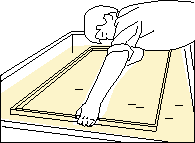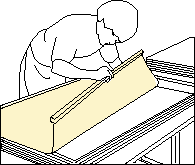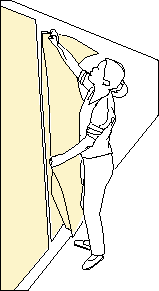
Rice Paper
Contact
Home

Rice Paper Production
- Retting. The choice of plant is stripped, cut in pieces, sun bleached, and then soaked in cool water pond for at least a month to loosen its tough wooden fiber.
- Cooking. The retted plant has to be cooked in a solution of water and wood ash to break its fiber apart. Bamboo, for example, contains 20% lignin (starch), an adhesive substance that glues its cellulose fiber together to enable it to grow to great heights. Lignin is water resistant and keeps the fibers from separating freely during pulping. The noncellulose substance can also cause discoloration and deterioration. In order to prepare the purest pulp, it must be removed by cooking.
- Pulping. The ancient Chinese artisans used wood mallet or foot-operated stone tilt hammer to beat plant fiber into pulp. The beating not only swells the wall of plant fibers into a mushy pulp, but also roughens their sides for a stronger rice paper.
- Vatting. A strainer is an necessity to turn the porridge-like pulp into a sheet of paper. The screen in the illustration is a fine bamboo mould (place mat) and wood deckle. The vatman dips the mould and deckle into a vat of pulp mixture, picking up a small quantity of pulp on the surface of the mould. He throws off any excess pulp, and shakes it from side to side to settle the fibers evenly. As the water drains through the screen, a thin layer of interlaced fiber is settles on the mould - a wet sheet of rice paper.

- Couching. A coucher removes the deckle from the mould and sets the mould facing a couching surface. He lays the bamboo screen flat across the surface, then lift it up carefully, leaving the wet paper behind. He returns the mould to the vatman and takes another mould ready for couching. This gradually build-up stack of papers is called post.

- Drying. The post is then taken away to squeeze out extra water by pressing boards and weight of rocks, and left outdoors to dry. Before the pressed post is complete dry, the papers are separated and mounted on fire walls for final drying. For multilayer rice paper, two or three sheets of papers are dried together. Drying not only produces a flat sheet, but also gives the paper a slightly different texture on the facing side.

| Rice Paper |
|
About History Fiber Production Make Your Own Sizing |
| Uses |
|
Calligraphy Mounting Painting Relief Printing Rubbing Western Art Kite Paper Cut Lantern Surfboard Window Covering |